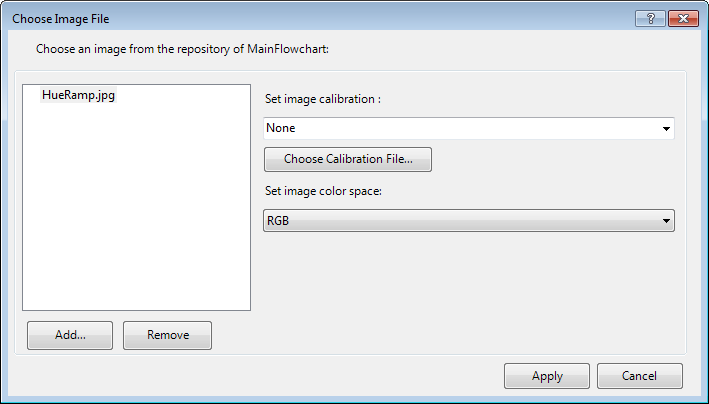Using static images
Any step that has an Image input can reference a static image. To do so, click on the Alternate options button next to any Image input in the Configuration pane, and select Choose Image File.... You can also access static images with the IMAGE function in the Advanced editor.
As the name implies, static images do not change while a project is running. They are typically used to hold master images representing a good part in flaw detection applications.

You can use the Choose Image File dialog to add, view, or remove static images from the repository of static image files that you are using in a project. Select a static image from the list and click on the Apply button to have the Image input reference the static image.

To add, view, or remove static images from the image repository, you can also use the Flowchart Manage Images... menu item, or select the Manage Images... context menu item from the Flowchart context menu. This displays a similar dialog, the Image Repository dialog, but it does not allow you to apply the static images to a step.
The Set Image Calibration dropdown list in the Choose Image File dialog displays the calibration files that are on the runtime platform (or in the project's Calibration folder in Emulation mode). If your project has a calibration associated with the Camera step, you must associate a compatible calibration to any static image that you use in the same project. Calibration files that are present in the Calibrations folder of the connected camera or the project in emulation appear in the dropdown list. If you want to load a calibration file by browsing to another folder, click on the Choose calibration file button.
All the static images listed in the repository are copied to the camera as part of the deployment process. Use compressed JPG image files when possible.
When the project is run on the runtime platform, all the static images are loaded into memory buffers at initialization. Therefore, there is no time penalty to access the static images; however, there is a memory cost.